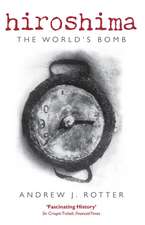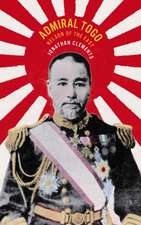Military Economics, Culture and Logistics in the Burma Campaign, 1942-1945: Warfare, Society and Culture
Autor Graham Dunlopen Limba Engleză Paperback – 21 ian 2016
| Toate formatele și edițiile | Preț | Express |
|---|---|---|
| Paperback (1) | 449.41 lei 43-57 zile | |
| Taylor & Francis – 21 ian 2016 | 449.41 lei 43-57 zile | |
| Hardback (1) | 1103.66 lei 43-57 zile | |
| Taylor & Francis – iul 2009 | 1103.66 lei 43-57 zile |
Preț: 449.41 lei
Nou
Puncte Express: 674
Preț estimativ în valută:
85.100€ • 90.01$ • 71.57£
85.100€ • 90.01$ • 71.57£
Carte tipărită la comandă
Livrare economică 31 martie-14 aprilie
Preluare comenzi: 021 569.72.76
Specificații
ISBN-13: 9781138663251
ISBN-10: 1138663255
Pagini: 272
Dimensiuni: 156 x 234 x 14 mm
Greutate: 0.45 kg
Ediția:1
Editura: Taylor & Francis
Colecția Routledge
Seria Warfare, Society and Culture
Locul publicării:Oxford, United Kingdom
ISBN-10: 1138663255
Pagini: 272
Dimensiuni: 156 x 234 x 14 mm
Greutate: 0.45 kg
Ediția:1
Editura: Taylor & Francis
Colecția Routledge
Seria Warfare, Society and Culture
Locul publicării:Oxford, United Kingdom
Cuprins
Introduction; Part I Part; Chapter 1 The Loss of Burma, January'”May 1942; Chapter 2 India's Readiness for War in the East, May 1942; Part II Part; Chapter 3 The Development of India as the Strategic Base; Chapter 4 The Development of the Operational Lines of Communication; Chapter 5 The Development of Tactical Maintenance; Part III Part; Chapter 6 The Logistic Influence: Defensive Victory, 1944; Chapter 7 The Logistic Influence: Planning the Invasion of Burma, 1944-5; Chapter 8 The Invasion of Burma, 1945; conclusion Conclusion;
Descriere
Following the fall of Burma to the Japanese in May 1942, reopening and expanding the link from India to China through Burma became the allied force's principal war aim in South-East Asia. This book argues that the campaign's development was driven more by what was logistictically possible than by pure strategic intent.

























